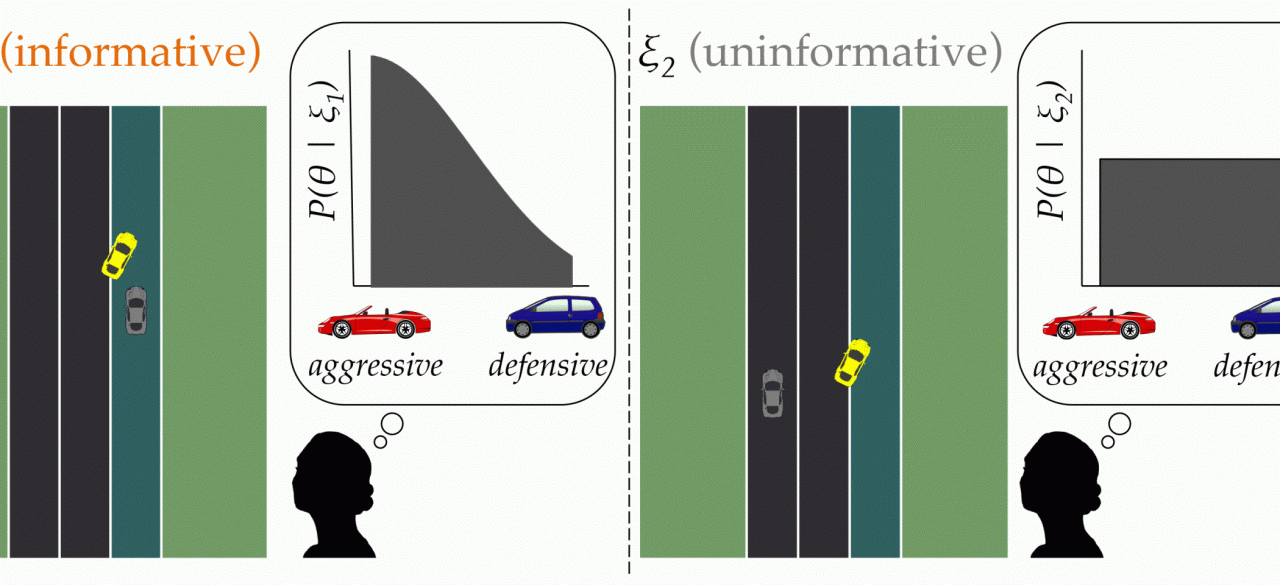Enabling Passenger Comfort by Increasing Behavior Transparency

ABOUT THE PROJECT
At a glance
Autonomous cars generate their motion by optimizing some objective function, either programmed in or learned. Implicitly or explicitly, this objective function trades off between notions of safety (avoiding collisions with static obstacles, other cars, and pedestrians), notions of efficiency (reaching the destination quickly), and notions of comfort (avoiding high acceleration or jerk). This trade off implicitly defines the car’s driving style – different objective functions lead to different styles.
After careful testing to ensure the right trade off is being made, the car goes out into the real world, where it comes in support of real people: of passengers who are going to ride in it. Our goal in this project is to make sure that these passengers feel comfortable and at ease in the car.
Specifically, we want to avoid passengers being constantly surprised (or terrified) by the car’s actions. What the car does at every step should ideally match passenger expectations. We thus focus on enabling passengers to anticipate the car’s behavior or motion in the new situations they will be faced with.
Our thesis is that key to passengers being able to anticipate what the car will do in any novel situation that it is faced with, is the passenger having a good mental model of the car’s driving style – of the trade off that the car makes.
| principal investigators | researchers | themes |
|---|---|---|
| Anca Dragan Pieter Abbeel | Sandy Huang | Passenger Comfort |

